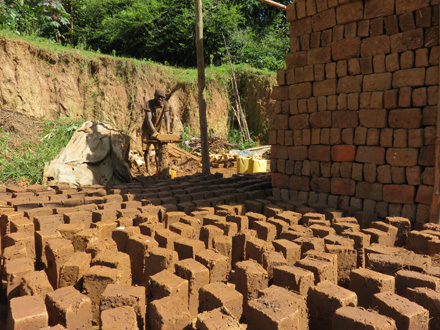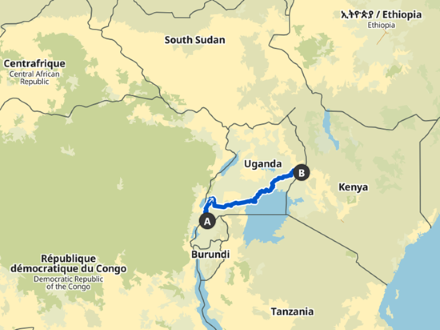
Cycling through Uganda’s tropical rainforests, beautiful tea plantations and extensive savanna is an absolute delight!
Kyanika (Border with Rwanda) – Kisoro – Bunyonyi – Bwindi Impenetrable Forest – Kihihi – Queen Elizabeth NP – Kiseny – Katunguru
286 km cycled
May 15 – 25, 2023
Watch the video!
Visa requirements
Darina’s East Africa three-month visa from Rwanda was still valid for Uganda, and Kurt availed of the Uganda e-visa valid for three months, which cost 51 USD. At the border, we flashed our yellow fever vaccination certs and had our temperatures taken. What-you-need-to-know-about-Ebola posters were omnipresent, as the country did have an outbreak in the central region in 2022.

Virunga volcano area
On our spin into the first town, Kisoro, the volcanoes of the Virunga region, that had accompanied us in Rwanda, continued to form a wonderful backdrop. We were headed up the side of one of these volcanoes to see if we could spot one of second cousins
!
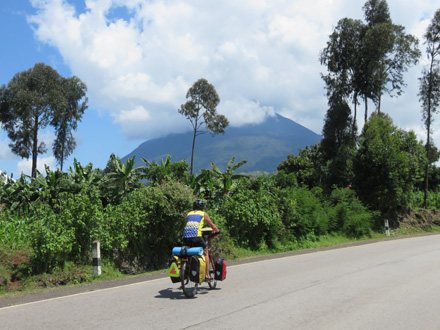
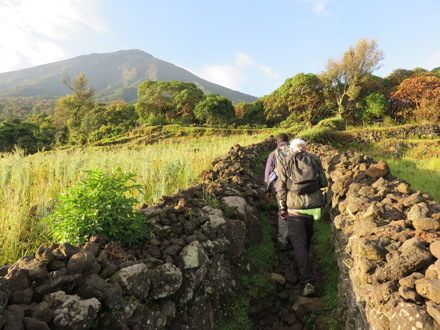
Mountain gorillas
Inhabiting the border areas of Rwanda, Uganda and the DRC, mountain gorillas weigh around 200kg, live up to about 40 years and are one of our closest relatives.
While they are on the endangered list mainly due to habitat destruction and disease, their numbers are now on the increase again thanks to the trojan work done by conservation organisations and park authorities.
We were accompanied by two armed rangers, as well as a guide on our hike. The rifels were theoretically to ensure our safety should elephants or buffalos cross our paths, but it is also rebel country and there is high security all along the Congolese border.
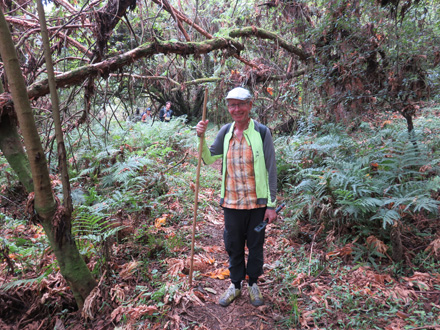

The gorilla experience was a special one – it would want to be as it didn’t come for free. An hour’s viewing sets you back 700USD/person in Uganda, half of what is charged in Rwanda! Nevertheless, to be at arm’s reach of these massive apes that spend most of their waking hours eating is a privilege, even if we felt at times that we were the ones being observed!






A cyclist's paradise
From volcanoes and terraced hills to tea plantations and tropical forests with countless lakes and wonderful red earth dirt tracks, SW Uganda is a real cyclist’s paradise!
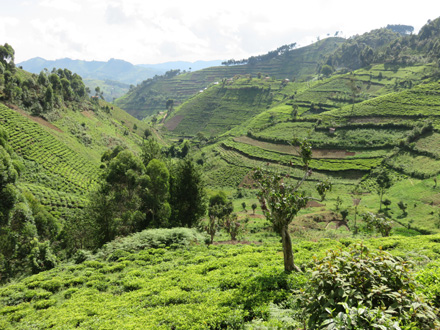
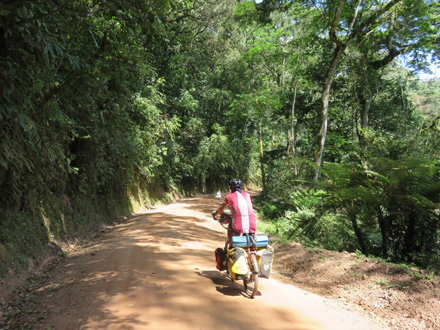
We came across countless baboons and monkeys… and in Kihihi there were quite a few kids with wooden bikes. Kneel with one leg on the crossbar and push with the other!
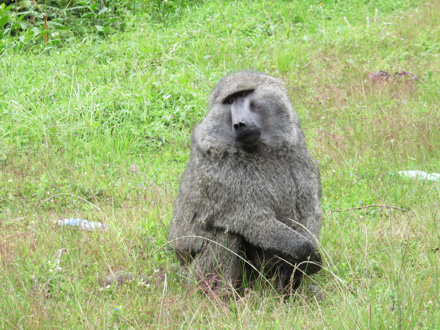
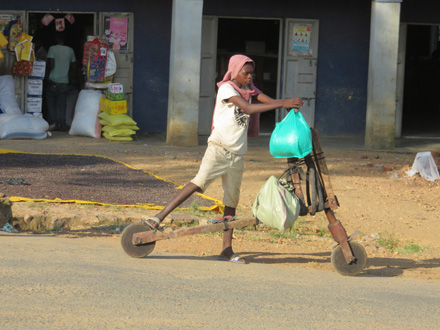
Queen Elizabeth lives on!
Having recovered from our Katavi National Park dramas in Tanzania, we were ready for new adventures… and with Queen Elizabeth National Park just down the road, we just couldn’t leave it out! The ride through the green savannah was an absolute delight and the lions we tracked for over 8km, didn’t come to greet us. In fact, this is one of the few places where the lions climb trees … so for sure, they saw us!

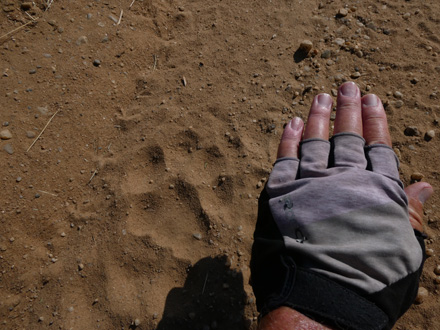
We enjoyed the lively morning markets in the fishing villages on Lake Edward and the Kazinga Channel… and we had the best tilapia (fish) ever! Actually, the place names Queen Elizabeth and Lake Edward are a legacy from colonial times. Uganda was a protectorate of the British Empire from 1894 until 1962, when it became an independent state.

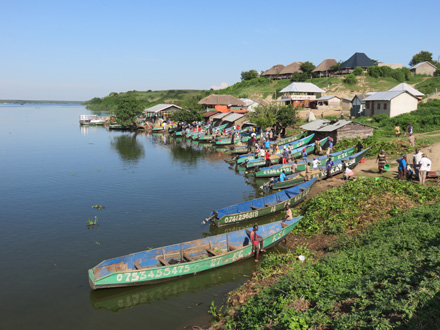
This time, the elephants and hippos remained at a safe distance, and Kurt was freed from unnecessary adrenaline kicks!
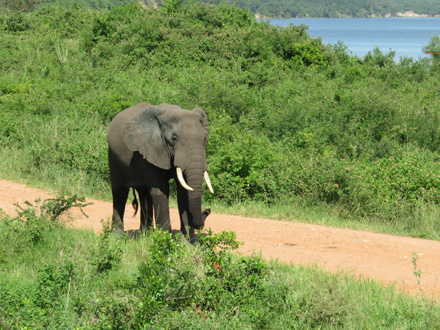
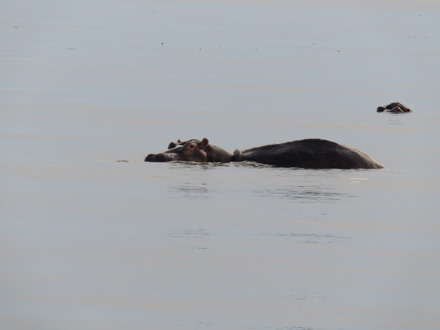
Third time lucky!
After two failed attempts in Burundi to see our nearest relative, the chimpanzee, in the wild, Kyambura Gorge in Queen Victoria National Park came up trumps! And what a sight it was: Babies and adults abseiling, swinging, grooming, observing, fighting, playing and apeing around in the most beautiful tropical rainforest! It was a whole lot more exciting that watching gorillas lying around feeding, and for 50USD the hike itself was worth every cent. Definitely one of our highlights!
Our ranger was armed again this time, and being right in the middle of Queen Elizabeth NP, it didn’t cost us a thought. That was until we met the armed forces just down the road on high alert for rebels arriving from the Democratic Republic of the Congo. The border area is volatile. Three weeks later, an ISIS-linked rebel group attacked a school just 50km away killing 41 and abducting 6 others. The Allied Democratic Forces (ADF), thought to be responsible, may have targeted the school to recruit, but also for the shock value.







Upcycling
Uganda was a shock to the system after Rwanda, where plastic bags are banned. Plastic rubbish is a real problem in Uganda and for that reason it was a joy to come across Ramadan and his tree shelter project in Katunguru. It had always been a problem to grow trees in the area because of goats and wild animals damaging the saplings. Now after planting, the trees are protected with a “PET bottle shelter” made by Ramadan’s school classes, and the village has taken on a new look!

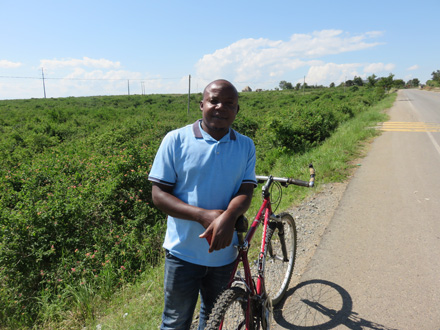
It wasn't easy to leave!
We were given a very generous upgrade from camping at Songbird Safaris Lodge, where we were treated like family from the get go. Not only did we stay in the lap of luxury, but we were also spoiled with delicioius meals, making it hard to leave. And the elephant at the entrance the morning we were due to set off, didn’t make it any easier!


A home away from home
Actually, throughout SW Uganda we were given an amazing welcome, and we often had that home-away-from-home feeling when invited for traditional family home-cooked meals. A big thank you to you all!

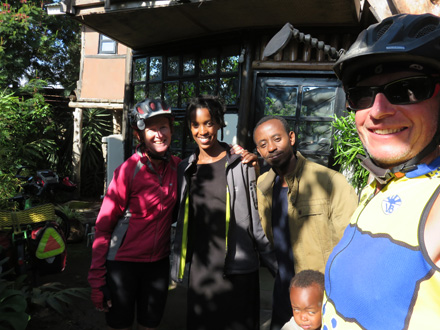
Food
After Rwanda, it was great to have roadside foodstalls again. Rolex is the go-to Ugandan snack. It’s basically an omelette rolled in a chapati (roll eggs!). Otherwise we had kikomando (beans and chapati). A substantial snack set us back 1,000 – 2,000 Ugandan Shillings (0.25-0.50 Euros).
Fish was widely available as well as goat, beef and chicken with the usual suspects: rice, chapati (flat bread), ugali (maize porridge) or chips. Main courses cost 8,000 -10,000 Ugandan Shillings (2-2.50 Euros) in a restaurant.


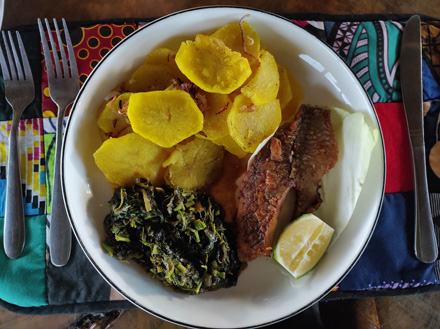
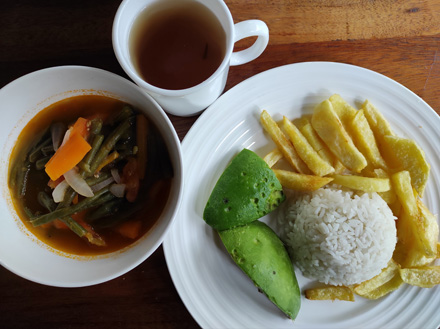
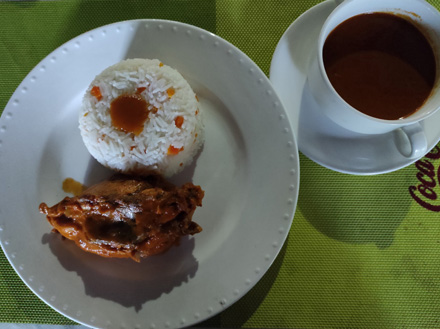
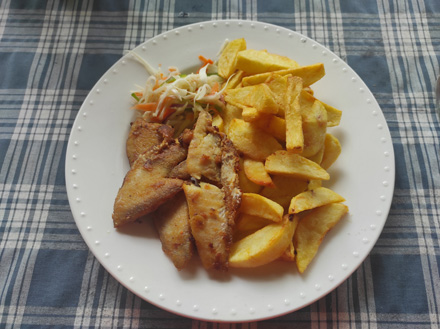

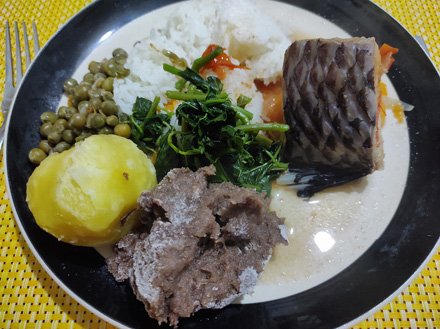
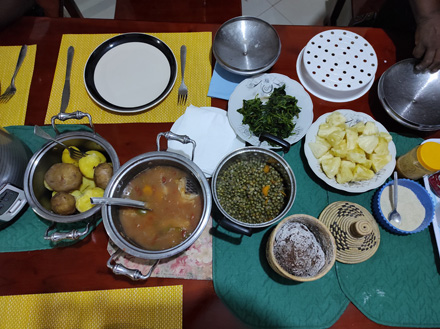
Accommodation
Camping in national parks cost from 7-10 USD per person and rooms started at about 4 USD. It was often cheaper to get a double room than pay for two people camping.
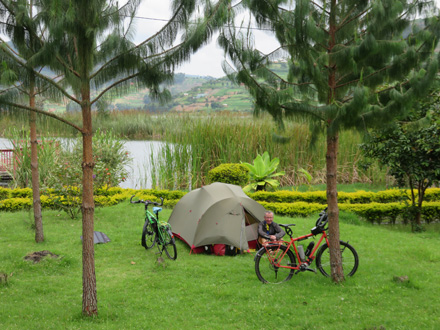

The verdict!
Uganda was a very pleasant surprise. In this first leg, we passed from tropical rainforests through tea plantations down to African savanna all in the space of less than 300km. That in itself is a wonder. Add the excitement of seeing apes in their natural habitat, tracking lions and dodging elephants and you have a little corner of the world where cycling is an absolute delight. Stay tuned for part two, coming real soon!

